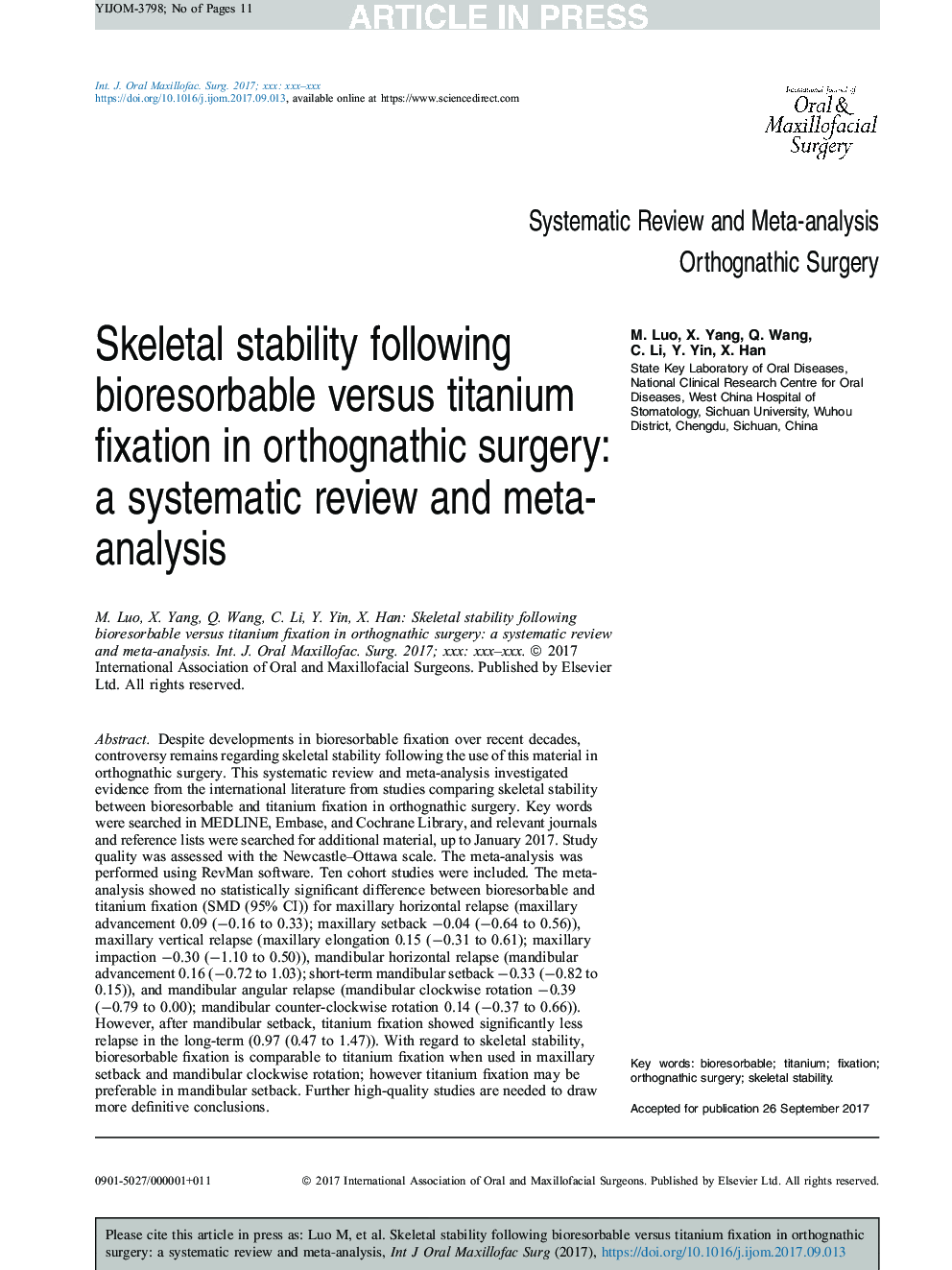| Article ID | Journal | Published Year | Pages | File Type |
|---|---|---|---|---|
| 8697876 | International Journal of Oral and Maxillofacial Surgery | 2018 | 11 Pages |
Abstract
Despite developments in bioresorbable fixation over recent decades, controversy remains regarding skeletal stability following the use of this material in orthognathic surgery. This systematic review and meta-analysis investigated evidence from the international literature from studies comparing skeletal stability between bioresorbable and titanium fixation in orthognathic surgery. Key words were searched in MEDLINE, Embase, and Cochrane Library, and relevant journals and reference lists were searched for additional material, up to January 2017. Study quality was assessed with the Newcastle-Ottawa scale. The meta-analysis was performed using RevMan software. Ten cohort studies were included. The meta-analysis showed no statistically significant difference between bioresorbable and titanium fixation (SMD (95% CI)) for maxillary horizontal relapse (maxillary advancement 0.09 (â0.16 to 0.33); maxillary setback â0.04 (â0.64 to 0.56)), maxillary vertical relapse (maxillary elongation 0.15 (â0.31 to 0.61); maxillary impaction â0.30 (â1.10 to 0.50)), mandibular horizontal relapse (mandibular advancement 0.16 (â0.72 to 1.03); short-term mandibular setback â0.33 (â0.82 to 0.15)), and mandibular angular relapse (mandibular clockwise rotation â0.39 (â0.79 to 0.00); mandibular counter-clockwise rotation 0.14 (â0.37 to 0.66)). However, after mandibular setback, titanium fixation showed significantly less relapse in the long-term (0.97 (0.47 to 1.47)). With regard to skeletal stability, bioresorbable fixation is comparable to titanium fixation when used in maxillary setback and mandibular clockwise rotation; however titanium fixation may be preferable in mandibular setback. Further high-quality studies are needed to draw more definitive conclusions.
Related Topics
Health Sciences
Medicine and Dentistry
Dentistry, Oral Surgery and Medicine
Authors
M. Luo, X. Yang, Q. Wang, C. Li, Y. Yin, X. Han,
